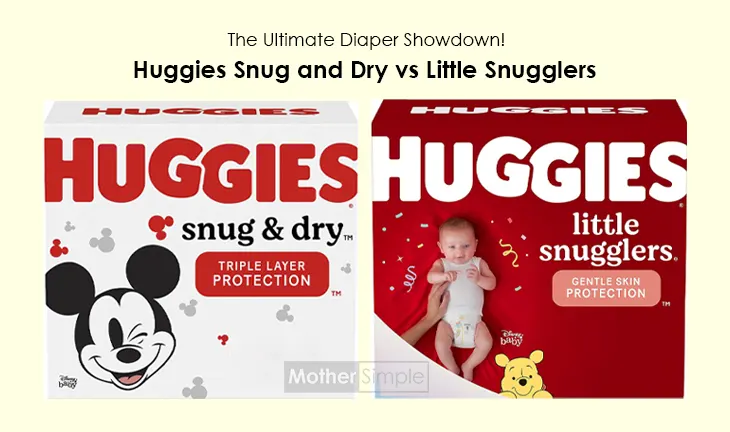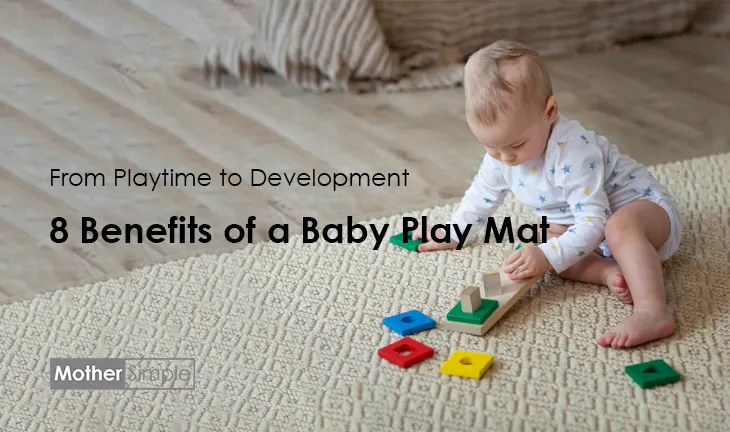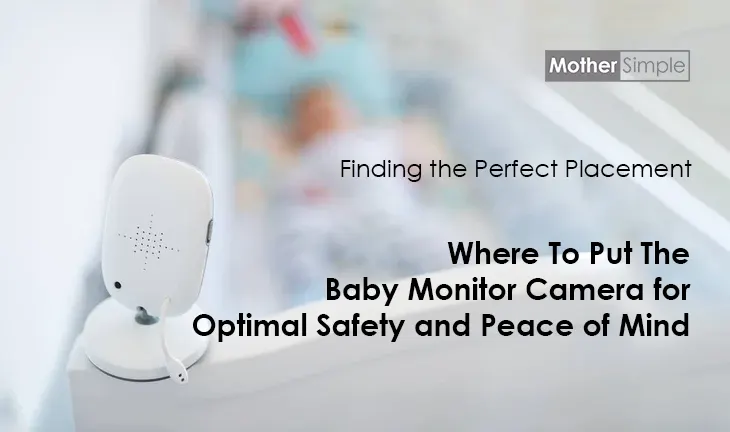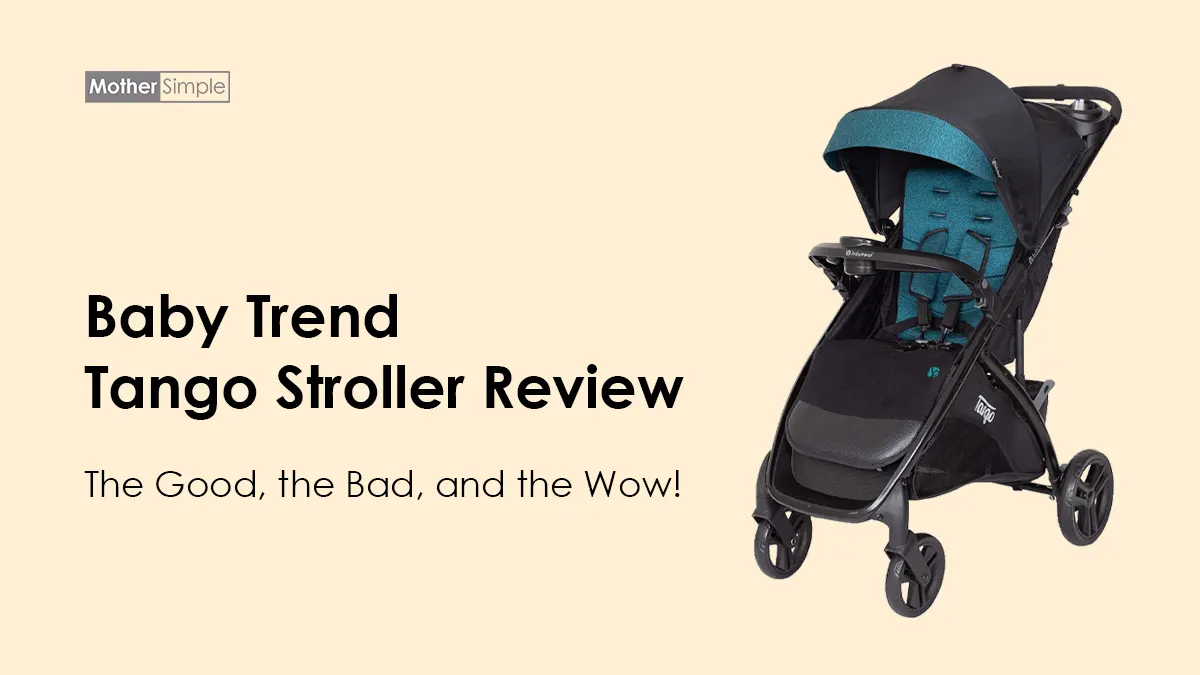Are you a parent constantly on the move, but find yourself facing unique challenges when it comes to feeding your little one while they’re securely buckled into their car seat?
Don’t worry, we understand the struggle! In this comprehensive guide, we’ll walk you through the ins and outs of feeding your baby in a car seat, addressing the challenges you might encounter along the way.
Together, we’ll ensure your baby’s safety and make mealtime enjoyable for both baby and parent. So buckle up, and let’s dive in!
Introduction
Feeding Made Easy, Even on the Go!
As a busy parent, you’re no stranger to the juggling act of daily life. From running errands to attending appointments, your schedule is packed. But what happens when it’s feeding time for your little one while you’re on the move?
Feeding your baby in a car seat can present a unique set of challenges that can leave you feeling overwhelmed and unsure of the best approach. Fumbling with bottles or attempting to breastfeed while keeping your eyes on the road can be a true test of multitasking skills.
Addressing the Challenges Head-On
Feeding your baby in a car seat requires careful attention to both their needs and their safety. The confined space, limited access, and the potential for distractions can make this task seem daunting.
Struggling to find the right position, dealing with spills or messes, and trying to keep your baby content and engaged can sometimes feel like an uphill battle.
But fear not! We’re here to help you navigate through these challenges and equip you with the knowledge and techniques to overcome them.
Safety First, Always
Above all else, safety is of paramount importance when feeding your baby in a car seat. Ensuring their comfort, proper positioning, and securing the car seat correctly are essential to protect your little one during the feeding process.
Balancing the need to feed your baby with the responsibility of maintaining a safe driving environment can be a delicate task. We’re here to guide you in creating a safe feeding space within your vehicle, allowing you to focus on the road while nourishing your baby.
Bonding Moments on the Go
Feeding time is not just about nutrition; it’s an opportunity for bonding and connection with your baby. The challenges of feeding your baby in a car seat shouldn’t take away from these precious moments.
By adopting the right techniques and incorporating fun and engaging elements into your feeding routine, you can transform car seat feedings into delightful experiences that foster closeness and warmth.
A Guide Tailored for You
We understand the unique struggles you face as a parent trying to feed your baby in a car seat. This guide is specifically crafted to address those challenges and provide you with practical solutions.
Whether you’re a first-time parent or a seasoned pro, we’ve got you covered. We’ll explore topics such as preparing for successful feeding sessions, mastering the art of one-handed feeding, creating an enjoyable feeding environment, troubleshooting common issues, and much more.
Consider this guide your go-to resource, offering support and guidance as you navigate the exciting journey of feeding your baby in a car seat.
So, are you ready to conquer the challenges and make feeding your baby in a car seat a breeze? In the upcoming sections, we’ll delve into essential topics that will equip you with the knowledge and techniques needed for success.
Together, we’ll ensure your baby’s safety and comfort, while fostering those precious bonding moments on the go. Get ready for a rewarding adventure!
Related Article: Ultimate Guide: How to Use Baby Wipes on a Newborn – Expert Tips
Understanding the Importance of Feeding Safety
Feeding your baby in a car seat can be a convenient solution while traveling, but it’s crucial to prioritize feeding safety.
In this article, we’ll delve into the significance of feeding safety, the potential risks associated with improper feeding, and the importance of adhering to safety guidelines.
Let’s explore how to ensure a safe and secure feeding experience for your little one.
1. The Significance of Feeding Safety
Feeding safety is paramount when it comes to caring for your baby, especially while travelling in a car seat. Consider the following reasons why feeding safety should be a top priority:
- Protecting your baby: Feeding safety measures help safeguard your baby from potential accidents or injuries that may occur during feeding in a moving vehicle.
- Ensuring proper development: By maintaining a safe feeding environment, you contribute to your baby’s overall well-being and support their healthy growth and development.
- Reducing distractions: Prioritizing feeding safety minimizes distractions for the driver, allowing them to focus on the road and ensuring a safe journey for everyone.
2. Risks and Hazards of Improper Feeding in a Car Seat
Improper feeding practices in a car seat can pose risks and hazards to your baby’s well-being. Here are some potential risks to be aware of:
- Choking hazards: Feeding your baby in a reclined position or while the car seat is not securely fastened can increase the risk of choking on milk or food.
- Restricted airways: Incorrect positioning in the car seat during feeding can lead to airway obstruction, potentially compromising your baby’s breathing.
- Increased accident risks: If the driver is distracted by an improperly positioned or fussy baby, it can increase the likelihood of accidents on the road.
3. Adhering to Safety Guidelines and Proper Positioning
To ensure feeding safety in a car seat, it’s crucial to follow safety guidelines and maintain proper positioning. Consider the following tips:
- Secure the car seat: Ensure that the car seat is securely installed in your vehicle according to the manufacturer’s instructions. Double-check that it is correctly fastened and adjusted to the appropriate angle for feeding.
- Proper head and neck support: Make sure your baby’s head and neck are properly supported during feeding. Adjust the car seat’s recline or headrest to ensure a comfortable and safe position.
- Avoid distractions: Stay focused on the road and avoid engaging in activities that may distract you from driving, such as reaching into the backseat or turning around to tend to your baby. If needed, pull over to a safe location to address any feeding concerns.
- Monitor your baby: Keep an eye on your baby throughout the feeding session to ensure they are comfortable and safe. Check for signs of discomfort, choking, or any potential issues that may require immediate attention.
Remember, feeding safety should never be compromised, even when you’re on the move.
By understanding the importance of feeding safety, being aware of potential risks, and adhering to safety guidelines and proper positioning, you can create a secure environment for your baby’s feeding sessions in the car seat.
Prioritize your baby’s well-being and provide them with a safe and nurturing feeding experience, allowing you to enjoy your travels while keeping their safety at the forefront. Safe journeys and happy feeding!
Preparing for a Successful Feeding Session in the Car Seat
Feeding your baby in a car seat can be a convenient and practical solution when you’re on the go. However, it requires some preparation to ensure a successful and stress-free feeding experience.
In this section, we’ll explore the key steps to prepare for feeding your baby in a car seat. From choosing the right car seat to gathering essential supplies and timing your feeding sessions, we’ve got you covered.
Let’s get started on creating a smooth and enjoyable feeding routine!
1. Choosing the Right Car Seat
Selecting a car seat that is suitable for feeding is essential for both comfort and safety. Consider the following factors when choosing a car seat:
- Supportive design: Look for a car seat that provides adequate support for your baby’s head, neck, and back during feeding. It should have a reclining feature or an adjustable headrest to ensure a comfortable position.
- Easy-to-clean materials: Opt for a car seat with removable and washable covers or materials that are easy to wipe clean. This makes cleaning up any spills or messes quick and hassle-free.
- Safety standards: Ensure that the car seat meets all safety standards and is properly installed in your vehicle. Safety should always be a top priority when choosing a car seat for feeding.
2. Gathering the Essential Supplies
To have a smooth feeding experience in the car seat, it’s important to have the necessary supplies within reach. Here’s a checklist of essential items to gather:
- Bottles or breastfeeding supplies: Depending on your feeding preference, make sure you have bottles, formula, or breastfeeding supplies ready to go.
- Burp cloths or bibs: Keep a stack of burp cloths or bibs nearby to catch any spills or dribbles during feeding.
- Extra clothing and diapers: Have a spare set of clothing and extra diapers on hand in case of any accidents or unexpected messes.
- Wipes or damp cloths: Keep wipes or damp cloths within reach for quick cleanups during and after feeding.
3. Timing is Key
Timing your feeding sessions around your baby’s schedule and travel time can greatly impact their comfort and cooperation. Consider the following tips:
- Plan feeding sessions: Try to plan your feeding sessions around your baby’s regular feeding schedule. This can help ensure that they are hungry and ready for a meal when you’re on the road.
- Allow for breaks: If you’re embarking on a long journey, plan for breaks during which you can safely stop and feed your baby. This allows for a more relaxed and focused feeding experience.
- Avoid feeding in a rush: Allow sufficient time for feeding without feeling rushed. Babies can sense stress and hurriedness, which may affect their feeding behaviour.
Remember, every baby is unique, and it may take some trial and error to find the feeding routine that works best for you and your little one. Stay flexible and be prepared to adapt to their needs along the way.
By following these steps and taking the time to prepare, you can set the stage for a successful feeding session in the car seat. Remember to prioritize your baby’s comfort and safety throughout the process.
With a well-chosen car seat, essential supplies at hand, and thoughtful timing, you’ll be ready to embark on a smooth and enjoyable feeding journey with your little one. Safe travels and happy feeding!
Mastering the Art of One-Handed Feeding
Feeding your baby in a car seat can be challenging, but with the right techniques and tips, you can master the art of one-handed feeding.
In this section, we’ll explore various methods for bottle feeding, provide guidance on breastfeeding in a car seat, and share tips for introducing solids while on the go.
Let’s dive in and discover the secrets to successful one-handed feeding!
1. Techniques for Bottle Feeding
Feeding your baby with a bottle while driving requires caution and proper techniques to ensure safety. Here are some techniques to safely and effectively feed your baby with a bottle in a car seat:
- Invest in a hands-free bottle holder: A hands-free bottle holder can be a game-changer for one-handed feeding. These holders secure the bottle in place, allowing your baby to feed independently while you focus on driving. Choose a holder that is compatible with your baby’s bottle size and design.
- Use a pacifier or teething toy: Sometimes, babies may need additional soothing during car rides. To keep your little one content while you’re on the road, consider offering a pacifier or a teething toy designed for car seat use. This can provide temporary relief and distract your baby from hunger until you can safely stop and attend to their feeding needs.
- Pre-fill bottles with formula or breast milk: Before getting into the car, pre-fill the bottles with the appropriate amount of formula or breast milk. This way, you can simply grab a prepared bottle when your baby is hungry, minimizing the need for handling the bottle and preparing the mixture while driving.
- Ensure proper bottle positioning: Position the bottle in a way that allows your baby to feed comfortably without straining. Tilt the bottle slightly to keep the nipple filled with milk or formula, but be mindful of preventing choking hazards. Regularly check the bottle’s angle to ensure a steady flow of liquid.
Remember, safety should always be the top priority. If you feel that one-handed feeding while driving is too challenging or distracting, it’s best to find a safe place to stop and attend to your baby’s feeding needs.
2. Tips for Breastfeeding
Breastfeeding in a car seat requires a different approach than bottle feeding but can still be done safely and comfortably. Here are some tips for breastfeeding your baby while in a car seat:
- Find a comfortable breastfeeding position: Experiment with different breastfeeding positions that work well for you and your baby in the car seat. This might include using a breastfeeding pillow or adjusting the car seat’s recline angle to ensure a comfortable latch.
- Use a nursing cover or breastfeeding scarf: A nursing cover or breastfeeding scarf can provide privacy and help create a cosy environment for breastfeeding in the car seat. Choose one that allows airflow and allows you to maintain eye contact with your baby.
- Take breaks when needed: If your baby needs a break during breastfeeding or if you feel the need to readjust or reposition yourself, find a safe spot to pull over and attend to these needs. Safety should always come first.
- Stay hydrated and nourished: Remember to take care of yourself by staying hydrated and nourished. Keep a bottle of water and some healthy snacks within reach to replenish your energy while breastfeeding on the go.
3. Introducing Solid Foods
Introducing solid foods to your baby while in a car seat can be convenient, especially during long journeys. Here are some tips for introducing solids while on the go:
- Choose travel-friendly finger foods: Opt for travel-friendly finger foods that are easy to handle and pose minimal choking hazards. Examples include small pieces of soft fruits, steamed vegetables, or baby-friendly snacks like puffs or teething biscuits.
- Pre-cut and pack food portions: Before embarking on your journey, pre-cut and pack small portions of the selected finger foods in easy-to-access containers or snack cups. This saves time and allows for quick and mess-free feeding in the car seat.
- Bring wipes or a damp cloth: Keep wipes or a damp cloth within reach to clean your baby’s hands and face after feeding. This helps maintain cleanliness and prevents discomfort caused by food residue.
- Avoid messy or hard-to-clean foods: While on the go, it’s best to avoid foods that are excessively messy or hard to clean up from the car seat. Opt for options that are easy to manage and won’t leave a lasting mess.
Remember to always supervise your baby while they are eating and remain vigilant to prevent any choking or safety hazards.
By utilizing these techniques and tips, you can master the art of one-handed feeding in a car seat.
Whether you choose bottle feeding, breastfeeding, or introducing solids, prioritize safety, and ensure a comfortable and enjoyable feeding experience for both you and your baby on the go. Happy travels and happy feeding!
Making the Car Seat Feeding Experience Enjoyable
Feeding your baby in a car seat doesn’t have to be a stressful or mundane task. With some creative ideas and thoughtful planning, you can make the feeding experience enjoyable for both you and your little one.
In this section, we’ll explore ways to engage your baby, provide soothing techniques, and discuss the benefits of music and entertainment during case at-feeding sessions.
Let’s dive in and discover how to create a positive and enjoyable feeding environment!
1. Engaging Your Baby
Keeping your baby engaged and entertained during a car seat feeding session can make the experience more enjoyable for both of you. Here are some ideas to engage your baby while feeding:
- Interactive toys: Attach interactive toys or soft toys with different textures to the car seat. These toys can capture your baby’s attention and provide sensory stimulation during feeding. Choose toys that are safe and easy to clean.
- Sensory activities: Consider introducing sensory activities that engage your baby’s senses. This can include toys that make sounds, have bright colours, or offer various textures. Soft books, rattles, or teething toys can be great options to stimulate your baby’s senses while they feed.
- Sing or talk to your baby: Your voice is one of the most captivating things for your baby. Sing songs, hum melodies, or simply talk to your baby in a soothing tone. This helps create a positive association with feeding time and keeps your baby engaged.
2. Soothing Techniques
A fussy baby can make feeding in a car seat challenging. Employing soothing techniques can help calm your baby and create a more relaxed feeding environment. Here are some ideas to soothe your baby during a car seat feeding session:
- Gentle rocking motion: Gently rock the car seat back and forth to create a soothing motion that mimics being held. This can help calm your baby and make them feel more secure while feeding.
- Provide a pacifier: Offering a pacifier can provide additional comfort and help soothe your baby during feeding. Choose a pacifier specifically designed for car seat use to ensure safety.
- Establish a routine: Babies thrive on routines. Establish a feeding routine that includes specific cues or rituals to signal feeding time. This familiarity can help your baby feel more relaxed and prepared for the feeding session.
3. Music and Entertainment
Playing soothing music or providing gentle entertainment can enhance the feeding experience for your baby. Here are some ways to incorporate music and entertainment into car seat feeding:
- Create a calming playlist: Prepare a playlist of soft, calming music that you can play during feeding sessions. The gentle melodies can create a soothing atmosphere and promote relaxation for both you and your baby.
- Use mobiles or visual stimulation: Install a car seat mobile or attach visually stimulating toys above the car seat. The movement and colours can capture your baby’s attention and make feeding time more engaging.
- Avoid excessive distractions: While some entertainment can be beneficial, it’s essential to strike a balance. Avoid overwhelming your baby with excessive distractions that may hinder their ability to focus on feeding.
Remember to always prioritize safety and ensure that any toys or entertainment options you choose are suitable for car seat use and do not pose any choking hazards.
By incorporating these ideas, you can transform the car seat feeding experience into an enjoyable and engaging time for both you and your baby.
Experiment with different techniques, follow your baby’s cues and create a nurturing environment that promotes bonding and relaxation during feeding. Happy feeding!
Safety First: Best Practices for Car Seat Feeding
Feeding your baby in a car seat requires special attention to safety to ensure a secure and comfortable experience.
In this section, we will guide you through the best practices for car seat feeding, including proper positioning, safety guidelines, and avoiding distractions.
Let’s dive in and prioritize the safety of your little one!
1. Proper Positioning
Proper positioning of the car seat is crucial for your baby’s safety and comfort during feeding sessions. Follow these steps to ensure correct positioning:
- Secure the car seat: Install the car seat according to the manufacturer’s instructions and ensure it is securely fastened to the vehicle. Double-check that the seat is stable and doesn’t move excessively.
- Position the car seat at the correct angle: Adjust the car seat to the appropriate recline angle recommended by the manufacturer. This position helps prevent your baby’s head from slumping forward, ensuring open airways and reducing the risk of choking.
- Face the car seat towards the rear: It is safest to position the car seat facing the rear of the vehicle. This provides better protection for your baby’s head, neck, and spine in the event of a sudden stop or collision.
- Avoid placing the car seat on an uneven surface: Make sure the car seat is placed on a flat and stable surface, avoiding any inclination or instability that could compromise your baby’s safety.
2. Safety Guidelines
Follow these comprehensive safety guidelines to ensure a secure feeding experience in the car seat:
- Secure your baby properly: Fasten the car seat harness snugly around your baby, making sure it fits properly. The harness should be positioned at or below your baby’s shoulders to prevent slipping or ejection.
- Avoid loose clothing and accessories: Dress your baby in clothing that is free from bulky or loose accessories, such as scarves, hooded jackets, or heavy blankets. These items can interfere with the proper functioning of the car seat harness and compromise safety.
- Check for correct harness tightness: Ensure that the car seat harness is snug but not too tight. You should be able to fit only one or two fingers between your baby’s chest and the straps. Regularly check the harness tightness as your baby grows.
- Never leave your baby unattended: Never leave your baby alone in the car seat, especially during feeding sessions. Always keep a close eye on your little one to prevent any accidents or choking hazards.
- Avoid using pillows or positioning devices: Do not use additional pillows or positioning devices in the car seat. These items can interfere with the proper fit of the harness and increase the risk of injury.
- Regularly inspect the car seat: Check the car seat regularly for any signs of wear, damage, or recalls. Follow the manufacturer’s guidelines for maintenance and replacement of parts.
3. Avoiding Distractions
While feeding your baby in a car seat, it’s essential to prioritize your focus on the road and minimize distractions. Here are some tips to help you stay focused:
- Plan feeding sessions: Plan your feeding sessions around your car trips to minimize the need for feeding while driving. Try to time your trips when your baby is not hungry to reduce distractions.
- Prepare bottles or snacks in advance: Prepare bottles or snacks before getting into the car to avoid the need for handling food while driving. Have them easily accessible within reach when needed.
- Utilize designated stops for longer journeys: If you’re embarking on a long journey, plan for designated stops where you can safely park the car and attend to your baby’s feeding needs without distractions.
- Have a passenger assist if possible: If you have a passenger in the vehicle, they can help with
feeding your baby while you focus on driving. This allows you to concentrate on the road without compromising safety.
By following these safety guidelines and minimizing distractions, you can ensure a secure and focused feeding experience for both you and your baby in the car seat.
Remember, safety should always be the top priority when feeding your baby in a car seat. Implement these best practices to create a safe and enjoyable environment for your little one during car journeys.
Troubleshooting Challenges and Common Issues
Feeding your baby in a car seat can sometimes come with its fair share of challenges and common issues. From spit-ups and messes to dealing with refusal and motion sickness, these situations can make feeding on the go a bit more complicated.
But worry not! We’ve got you covered with practical tips and strategies to troubleshoot these challenges and ensure a smooth and enjoyable feeding experience.
1. Spit-Ups and Messes
Feeding your baby in a car seat can sometimes result in unexpected messes and spit-ups. To handle these situations like a pro, consider the following tips:
- Be prepared: Keep a stash of burp cloths, bibs, and wipes within easy reach to quickly clean up any messes.
- Use a bib or a burp cloth: Protect your baby’s clothes and the car seat by using a bib or a burp cloth to catch any spills or spit-ups.
- Take breaks for burping: During longer car rides, make sure to take short breaks to burp your baby to minimize the chances of discomfort and spit-ups.
- Pack spare clothing: It’s always a good idea to have spare clothing for both you and your baby in case of larger messes or unexpected accidents.
2. Dealing with Refusal
Feeding refusals and picky eaters can be quite frustrating, especially when you’re on the move. Here are some strategies to handle these situations:
- Offer familiar foods: Stick to foods that your baby enjoys and is familiar with while travelling in a car seat to increase the chances of acceptance.
- Create a comfortable environment: Make the feeding environment in the car seat as comfortable and familiar as possible. Use familiar bottles, cups, or utensils and try to mimic the feeding routine from home.
- Engage your baby: Keep your baby entertained and distracted by singing songs, playing gentle music, or offering small toys to make the feeding experience more enjoyable.
3. Overcoming Motion Sickness
Motion sickness can pose a challenge during feeding sessions in a car seat. Here are some tips to manage and prevent motion sickness:
- Minimize visual distractions: Reduce visual stimuli inside the car by using window shades or covering the car seat with a lightweight blanket to help alleviate motion sickness.
- Avoid feeding on a full stomach: Try to schedule feeding sessions after a brief break from motion to prevent discomfort and motion sickness.
- Ventilate the car: Keep the car well-ventilated to reduce stuffiness and minimize the chances of motion sickness.
By following these troubleshooting tips and strategies, you can overcome common challenges and issues that may arise during feeding sessions in a car seat.
Remember, every baby is unique, so it may take some trial and error to find what works best for your little one. Stay patient, adaptable, and always prioritize your baby’s comfort and well-being. Happy feeding on the go!
Cleaning and Maintenance Tips After Baby Feeding in a Car
Feeding your baby in a car seat can sometimes result in spills, crumbs, and messes. But fear not, parents! We’ve got you covered with essential cleaning and maintenance tips to keep your car seat in tip-top shape after those adorable feeding sessions.
In this section, we’ll cover cleaning the car seat, organizing and storing supplies, and maintaining hygiene during feeding sessions on the go. Let’s dive in!
1. Cleaning the Car Seat
Cleaning your car seat after feeding sessions is crucial to ensure a clean and comfortable environment for your little one. Follow these steps to effectively clean and maintain your car seat:
- Remove any detachable parts: If your car seat has detachable parts such as covers, straps, or inserts, remove them according to the manufacturer’s instructions.
- Spot clean spills and stains: Using a damp cloth or baby-safe wipe, gently blot or wipe away any spills or stains on the car seat surface. For stubborn stains, you can use a mild detergent mixed with warm water, but be sure to rinse thoroughfare words.
- Clean the harness and buckles: Check the manufacturer’s guidelines for cleaning the harness and buckles. Typically, you can wipe them down with a damp cloth or use a small brush to remove any debris or crumbs. Avoid submerging them in water or using harsh chemicals.
- Vacuum the car seat: Use a vacuum cleaner with a brush attachment to remove crumbs, dirt, and dust from the car seat, paying attention to crevices and hard-to-reach areas.
- Air dry thoroughly: After cleaning, allow the car seat and its detachable parts to air dry completely before reassembling. Avoid direct sunlight or heat sources that could damage the material.
Remember, always refer to the manufacturer’s guidelines for specific cleaning instructions tailored to your car seat model.
2. Organizing and Storing Supplies
Having feeding supplies well-organized and easily accessible in the car can make your feeding sessions smoother and more convenient. Consider these suggestions for organizing and storing your feeding supplies:
- Use a portable caddy or organizer: Invest in a portable caddy or organizer specifically designed for baby supplies. These typically have compartments and pockets to hold bottles, formula, bibs, utensils, and other feeding essentials. Keep it within reach in the car for quick and easy access.
- Utilize travel-friendly containers: Opt for travel-friendly containers and pouches for storing snacks, formula, and purees. Look for leak-proof and BPA-free options that can fit neatly in your caddy or organizer.
- Label and pack essentials: Label your feeding supplies with your baby’s name and pack them in individual labelled bags or containers. This helps with organization and ensures you have everything you need for feeding on the go.
- Regularly restock and refresh: Check your supplies regularly and restock as needed. Dispose of expired items and refresh the stock of formula, snacks, and other perishable items.
By organizing and storing your feeding supplies efficiently, you’ll be ready for any feeding situation that arises during your car journeys.
3. Traveling Hygiene
Maintaining hygiene and cleanliness during feeding sessions on the go is essential to keep your baby healthy and comfortable. Consider the following tips for a hygienic feeding experience:
- Pack hand sanitisers and wipes: Keep travel-sized hand sanitisers and baby-safe wipes in your car for easy access. Use them to sanitize your hands before handling feeding supplies and to clean surfaces when needed.
- Carry disposable bibs and placemats: Disposable bibs and placemats provide a convenient and hygienic solution for messy feedings. They can be easily disposed of after
use, reducing the risk of cross-contamination. - Use spill-proof feeding accessories: Opt for spill-proof bottles, sippy cups, and snack containers to minimize spills and messes during car seat feedings. Look for products that are easy to clean and assemble.
- Keep a spare set of clothes: Accidents can happen, so it’s always a good idea to keep a spare set of clothes for your baby and yourself in the car. This way, you’re prepared for any unexpected spills or messes.
- Maintain a clean car seat environment: Regularly clean and vacuum your car seat to prevent the buildup of dirt, crumbs, and bacteria. Consider using a car seat cover or liner for added protection and easy maintenance.
By following these travelling hygiene tips, you can ensure a clean and comfortable feeding experience for your little one, no matter where your adventures take you.
That wraps up our comprehensive guide on feeding your baby in a car seat! We’ve covered everything from positioning and safety tips to mealtime essentials and cleaning and maintenance suggestions.
With these insights, you can enjoy convenient and enjoyable feeding sessions on the go while keeping your baby safe and comfortable. Happy travels and happy feeding!
Additional Resources for Car Seat Feeding
As you continue your journey of feeding your baby in a car seat, it’s helpful to know that you’re not alone. There are various resources available that can provide additional support, guidance, and information. Here are some valuable resources to consider:
Online Parenting Communities
- Connect with other parents who have firsthand experience in feeding their babies in car seats.
- Seek advice, ask questions, and share tips in a supportive network.
Lactation Consultants
- Get guidance from trained professionals specializing in breastfeeding.
- Receive expert advice on positioning, latch techniques, and addressing concerns.
Paediatricians and Healthcare Providers
- Consult with your trusted healthcare provider for personalized advice and reassurance.
- Discuss any concerns or seek professional expertise regarding feeding in a car seat.
Parenting Books and Guides
- Access comprehensive information on car seat feeding and general feeding techniques.
- Find valuable tips, step-by-step instructions, and expert advice from reputable sources.
Manufacturer Websites and Support
- Visit the website of your car seat manufacturer for specific guidelines and instructions.
- Contact customer support for information on feeding safety, positioning, and maintenance.
By utilizing these additional resources, you can further enhance your knowledge and seek guidance from experts and experienced parents who can provide valuable insights and support.
Remember, every baby is unique, and it’s important to find the approach that works best for you and your little one.
As you explore these resources, keep in mind that the information provided is meant to supplement your research and discussions with healthcare professionals. Always prioritize the safety and well-being of your baby, and trust your instincts as a parent.
Wishing you success and confidence in your car seat feeding journey!
Conclusion: Empowering Parents for Car Seat Feedings
Feeding your baby in a car seat can be a rewarding experience when approached with the right knowledge and techniques.
Throughout this comprehensive guide, we’ve explored various aspects of feeding your baby in a car seat, focusing on safety, convenience, and creating a positive feeding environment.
Let’s recap the main points covered:
- Safety First: We emphasized the importance of proper positioning, securing the car seat correctly, and following safety guidelines to ensure your baby’s well-being during feeding sessions.
- Convenience and Organization: We provided tips for organizing and storing feeding supplies in the car for easy access, as well as the significance of timing feeding sessions around your baby’s schedule and travel time.
- Mastering Techniques: We explored techniques for bottle feeding, breastfeeding, and introducing solid foods in a car seat, offering practical advice and suggestions for a successful feeding experience.
- Enjoyable Feeding Sessions: We discussed ways to engage and soothe your baby during feeding, including interactive toys, soothing techniques, and creating a positive atmosphere with music or gentle stimulation.
- Troubleshooting Challenges: We addressed common issues such as spit-ups and messes, refusal to eat, and motion sickness, providing strategies to overcome these challenges and ensure a smooth feeding experience.
In conclusion, feeding your baby in a car seat requires attention to safety, planning, and adapting to your baby’s needs.
By implementing the tips and techniques discussed in this guide, you can make feeding sessions in a car seat both safe and enjoyable for both you and your baby.
Remember, each baby is unique, and it may take some experimentation to find the best approach that works for your little one.
Stay patient, be adaptable, and always prioritize your baby’s comfort and well-being.
Feeding your baby in a car seat allows you to maintain a sense of normalcy and flexibility in your daily routine, enabling you to nourish your little one even while on the go.
With the knowledge and confidence gained from this guide, you’re well-equipped to embark on this journey of feeding your baby in a car seat successfully.
We hope this guide has empowered you and provided valuable insights into how to feed your baby in a car seat.
Embrace the adventure, enjoy the bonding moments, and make each feeding session a special time for you and your little one. Safe travels and happy feeding!
FAQ – Frequently Asked Questions about Feeding a Baby in a Car Seat.
Q1: Is it safe to feed my baby in a car seat?
A: Feeding your baby in a car seat can be safe if you follow proper safety guidelines and precautions. Ensure that the car seat is securely installed and positioned correctly. Always prioritize the safety of your baby by avoiding distractions and keeping your focus on the road.
Q2: What are the best techniques for bottle-feeding in a car seat?
A: When bottle-feeding in a car seat, you can try different techniques to ensure your baby’s comfort and safety. Some effective techniques include using a bottle holder or a hands-free bottle, ensuring the bottle is properly angled to prevent choking, and taking frequent breaks to burp your baby.
Q3: How can I breastfeed my baby comfortably in a car seat?
A: Breastfeeding in a car seat can be challenging but manageable with the right techniques. You can use a nursing cover for privacy and support, adjust the car seat’s recline position for better latch and comfort, and consider using breastfeeding pillows or cushions for added support.
Q4: What should I do if my baby refuses to eat in a car seat?
A: If your baby refuses to eat in a car seat, it’s important not to force them. Try to identify the reason for the refusal, such as discomfort or distractions. Consider taking a break and trying again later when your baby is more relaxed. Offering familiar and unfavourite foods may also help in encouraging feeding.
Q5: How can I prevent messes and spills while feeding my baby in a car seat?
A: To minimize messes and spills, choose spill-proof feeding accessories, such as spill-proof cups or bottles with secure lids. Use bibs or burp cloths to catch any spills, and consider using feeding mats or tray liners to contain messes and make clean-up easier.
Q6: Can I introduce solid foods to my baby in a car seat?
A: Introducing solid foods in a car seat is possible, but it requires careful preparation and consideration of safety and cleanliness. Choose foods that are easy to handle and minimize choking hazards. Pack small, portioned food containers and utensils for convenience. Always prioritize your baby’s safety and ensure they are securely fastened in the car seat.
Q7: How can I ensure my baby stays comfortable during feeding sessions in a car seat?
A: To ensure your baby’s comfort, make sure the car seat is properly padded and adjusted to provide adequate support. Consider using cushioning inserts or pillows specifically designed for car seats to enhance comfort. Additionally, dress your baby in comfortable clothing and check the temperature inside the car to avoid overheating.
Q8: Can I use a baby carrier or sling while feeding my baby in a car seat?
A: It is not recommended to use a baby carrier or sling while feeding your baby in a car seat. These devices can interfere with the proper positioning and safety of both the baby and the car seat. It’s best to focus on feeding your baby securely and without any additional accessories that may compromise safety.
Q9: How can I prevent my baby from choking while feeding in a car seat?
A: Choking prevention is crucial when feeding a baby in a car seat. Always ensure that the baby is in an upright or semi-reclined position to promote proper swallowing and reduce the risk of choking. Cut food into small, manageable pieces and avoid offering foods that pose choking hazards, such as whole grapes, popcorn, or hard candies.
Q10: Are there any specific guidelines for feeding my baby in a car seat during long car journeys?
A: When embarking on long car journeys, it’s important to plan your baby’s feeding sessions strategically. Consider scheduling feeding breaks according to your baby’s regular feeding routine and plan stops where you can safely attend to your baby’s feeding needs. Pack sufficient supplies, including formula, breast milk, or baby food, and ensure they are stored properly to maintain freshness and quality.
Remember, every baby is unique, and what works for one may not work for another. Trust your instincts as a parent, seek guidance from healthcare professionals, and prioritize your baby’s safety and comfort while feeding them in a car seat.











